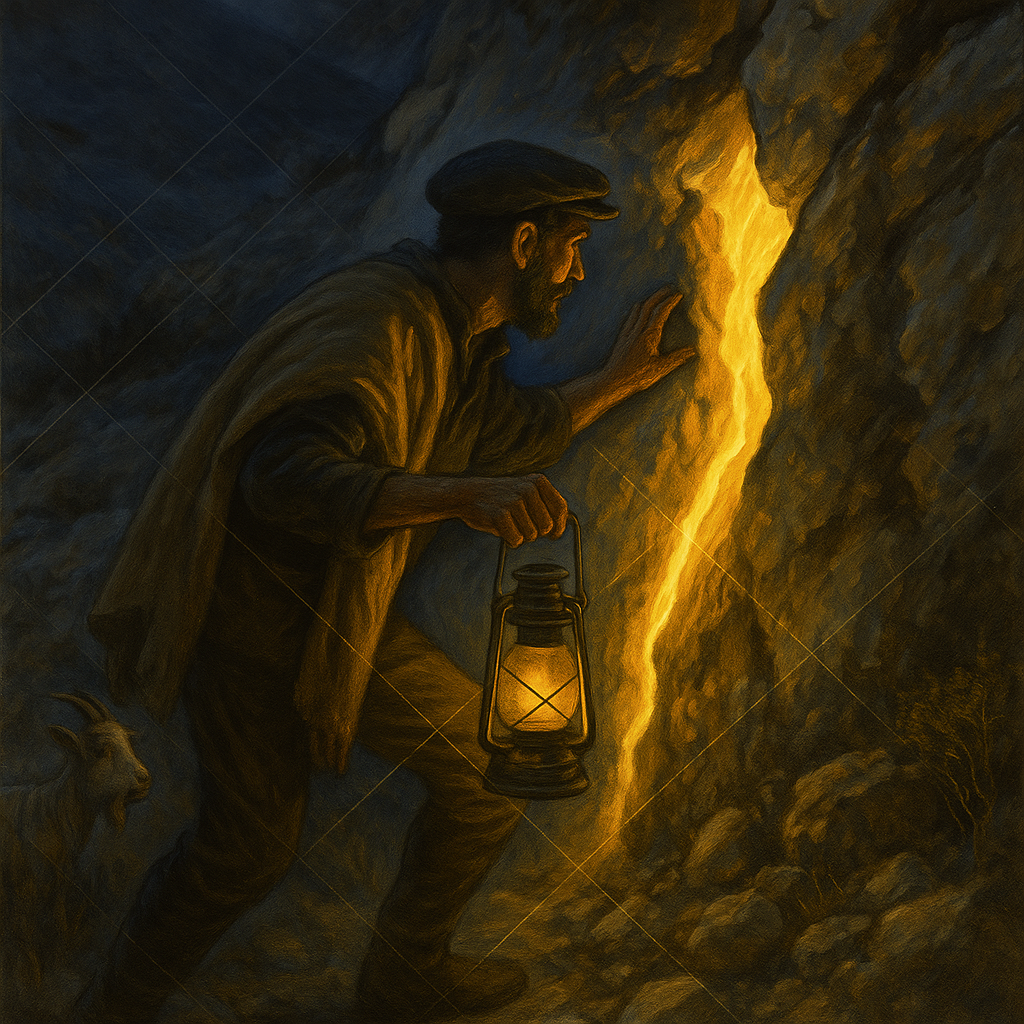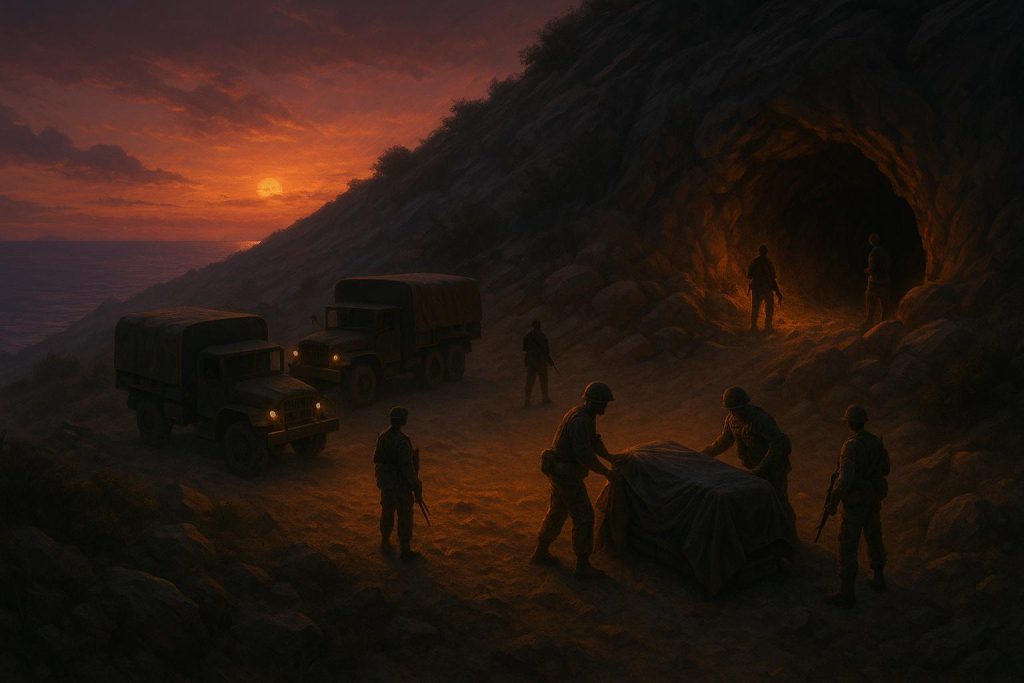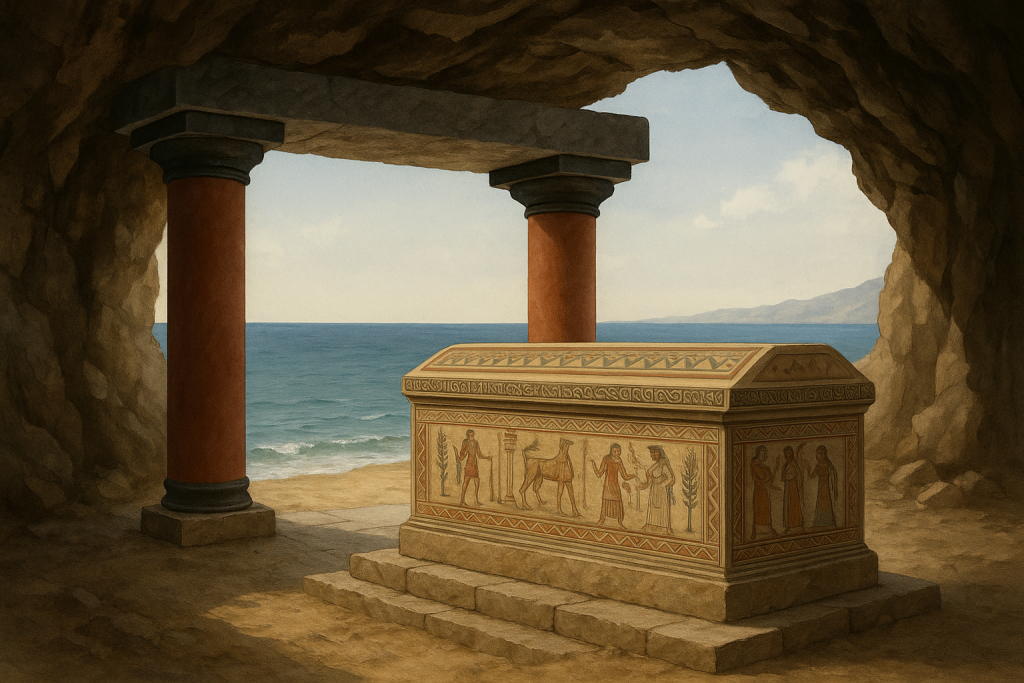“There are places where the skin of the world grows thin. And under it, things wait.”
Nestled on the southern coast of Crete, outside the sleepy village of Tsoutsouras, lies a cave whispered about for generations. The locals call it sacred. Some say it was dedicated to Eileithyia, the Minoan goddess of birth and transition. Others speak in lower tones — of strange lights, healings, and moments where time itself seems to pause.
But in the early 2000s, something happened that shifted the cave from myth to mystery.
The Day the Gate Was Sealed
The cave in question is the Cave of Eileithyia — sacred in Minoan tradition as a womb of the goddess of birth. But for some, it has a different name entirely: the site of contact. Eyewitnesses say that in the early 2000s, this very cave was the epicenter of something extraordinary.
The story doesn’t begin with soldiers. It begins with a shepherd.
In the 1950s, two goats vanished near a fissure in the hillside above Tsoutsouras. When the shepherd investigated, he uncovered a hidden passage. Crawling through, he discovered a massive chamber lit by an eerie inner glow. Inside were strange devices, sculptures that seemed aerodynamic, and a freshwater spring the animals had found.

He told no one — at first. But when he returned with flashlights and friends, the scene expanded. Hallways. Vaults. Something humming. Then, everything changed.
A few days later, Americans arrived — plainclothes, but armed. Locals say they moved with purpose, entered the cave, and emerged five hours later. Trucks rolled in. The shepherd was paid — in silence. Then disappeared abroad for decades.
According to several Greek-language reports and local witnesses, a team of foreign personnel — American, dressed in civilian gear but with military posture — arrived at the cave unannounced. The area was quickly cordoned off. Locals were told it was for safety. But no seismic activity was recorded. No environmental hazard declared.
Whispers emerged: they had found something inside.
A structure. A resonance. A kind of device. Not metal — not stone — something else entirely.
Shortly after, the cave was sealed. Officially: for preservation. Unofficially? A door had been closed. And something inside was taken.

Thresholds, Gridwork, and the Tomb
The Minoans, long before the Greeks, regarded certain coastal caves as gateways — not to hell, but to elsewhere. Caves were not tombs, they were thresholds. Places of initiation. Sites where gods and ancestors could be encountered, consulted, or reborn.
What made Tsoutsouras unique? It was aligned, some argue, not with stars — but with magnetic and gravitational anomalies. Amateur geophysicists have noted strange compass behavior in the region. Water flows oddly. Electronics short.
Could the Minoans have built — or guarded — these caves not as metaphor, but as access points?
Now consider this: what if the entire island of Crete was structured as a kind of map? A memory grid. A harmonic engine. From the palace at Knossos to the Baetyl stones near Anemospilia, the sacred architecture of Crete doesn’t just honor the gods — it remembers something.
Something older.
Tsoutsouras, in that system, may not have been just a sacred site — but a keystone. A keyhole in the crust. The place where signal once passed.
And just east of Tsoutsouras port lies Pourgonero beach — or Krassas, as locals call it. Quiet. Undisturbed. But in local tradition, it hides something extraordinary: the eternal tomb of King Minos himself. Not in a palace or mountain crypt, but beneath the sand. Beneath the wind-swept dunes.

Some say his sarcophagus was placed there to rest between worlds — not sky, not sea, but threshold. A place not of death, but of encoded sleep.
And if Minos was more than a man — if he was a keeper of signal, of wisdom, of gatekeeping technology — then his tomb might not be a tomb at all.
It may be the interface.
What Remains, What Waits
What if the cave didn’t hold alien tech… but something stranger? A mnemonic relay — a storage point for planetary memory, like a crystalized subconscious. Something not from another world, but from before ours was rewritten.
The stories locals still tell — of light in the walls, of vibrations that alter dreams — may be residual echoes of a forgotten function. A system we once knew how to speak with.
Or perhaps it still listens. Waiting for the signal to return.
The cave of Tsoutsouras is now guarded, monitored, but not forgotten. Pilgrims still come. Not tourists — seekers. People who dream differently after standing near its threshold. People who wake with new ideas. People who hear faint hums in the soil beneath their feet.
Perhaps the cave is closed. But the gate is not.
Not if you remember what you came to find.
Keftiu is memory. Keftiu is the signal.
Follow the thread. Follow the gate.
Keftiu.com | Substack | #TsoutsourasGate #ForgottenGrid #OracleOfCrete

